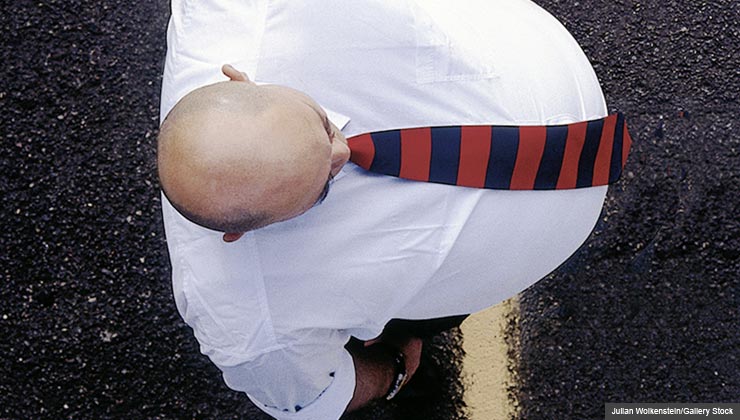Gout Myths vs. Facts - Gout Symptoms, Causes, Treatments
- Select a language for the TTS:
- UK English Female
- UK English Male
- US English Female
- US English Male
- Australian Female
- Australian Male
- Language selected: (auto detect) - EN

Play all audios:

Facebook Twitter LinkedIn People of all sizes and incomes get gout. Photo by Getty Images
Gout isn't just for paunchy Pickwickians who overindulge in Stilton cheese and a tawny port. More than 8 million Americans have this painful and potentially disabling form of arthritis, and
that number is rising. Indeed, gout is now the most common type of inflammatory arthritis in men over age 40.
The notion that gout is no longer prevalent is just one of the many misconceptions swirling around this age-old malady. Below, experts replace several other myths with facts.
Truth: People of all sizes get gout — although extra pounds increase the risk, says John Reveille, M.D., director of rheumatology at the University of Texas Health Science Center in Houston.
Gout is also more common in people who have other, often weight-related health problems, including diabetes and high blood pressure or cholesterol. And while income has nothing to do with
the condition, genes do play a part: If your parents had gout, you're more likely to have it as well.
Gout is not a gender-specific disease. Photo by Corbis 2. Myth: Women aren'tafflicted by gout.
Truth: Men and women alike can develop the disease, although men are more vulnerable earlier in life. "Gout is 10 times more common in men than in women, until women reach menopause. The
incidence of new cases of gout in men and women tends to equal out after age 60 or so," says Herbert Baraf, M.D., clinical professor of medicine at George Washington University Medical
Center in Washington, D.C.
Throbbing pain on the tip of your big toe? You might have gout. Photo by Veronique Beranger/Getty Images 3. Myth: Gout pain always attacks the big toe.Truth: Gout occurs when uric acid builds up in the blood, forming crystals that lodge in and inflame joints. It's true that gout often first attacks the joints of the big toe, but it can
also occur in the knees, ankles, feet and hands. In women with osteoarthritis, for example, gout pain commonly starts in the small joints of the hands. Although the first attacks often
involve only one or two joints, over time multiple joints become affected. If the disease isn't treated, it can cause permanent damage.